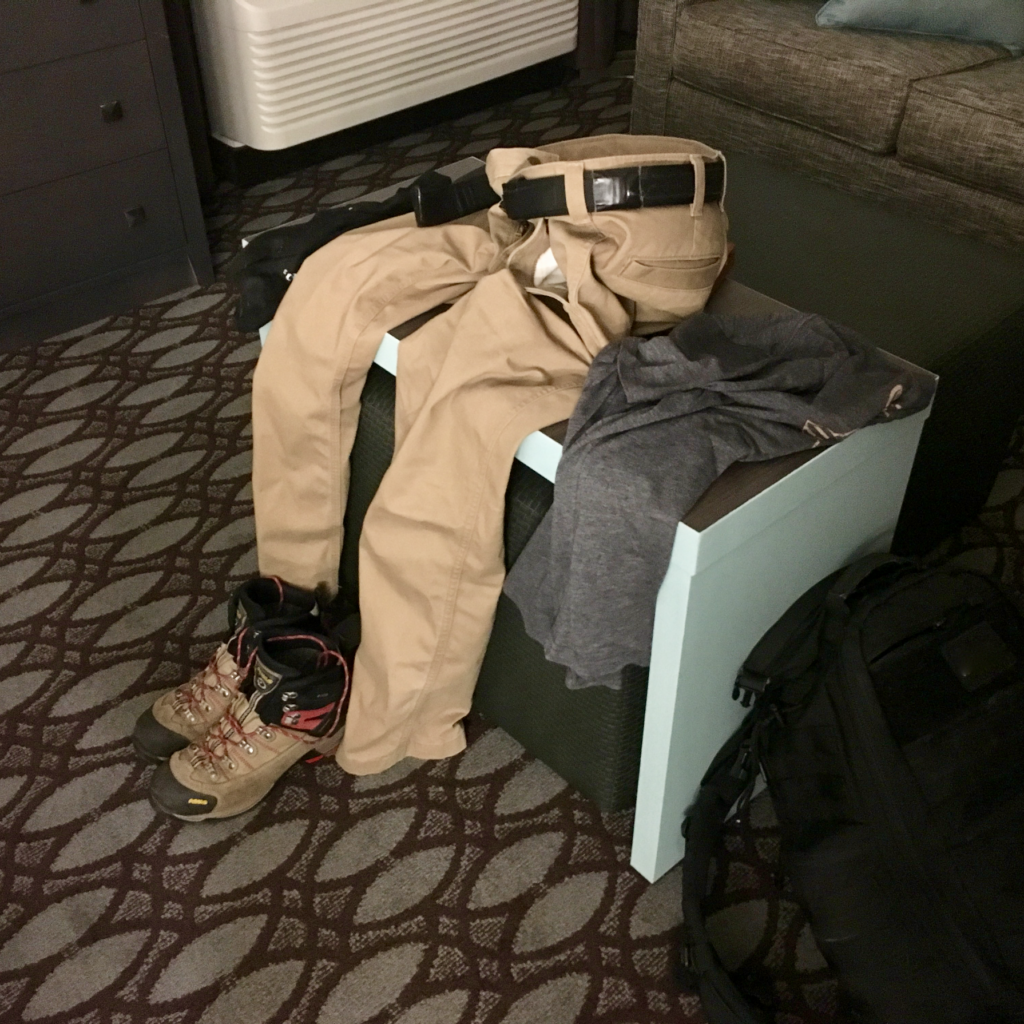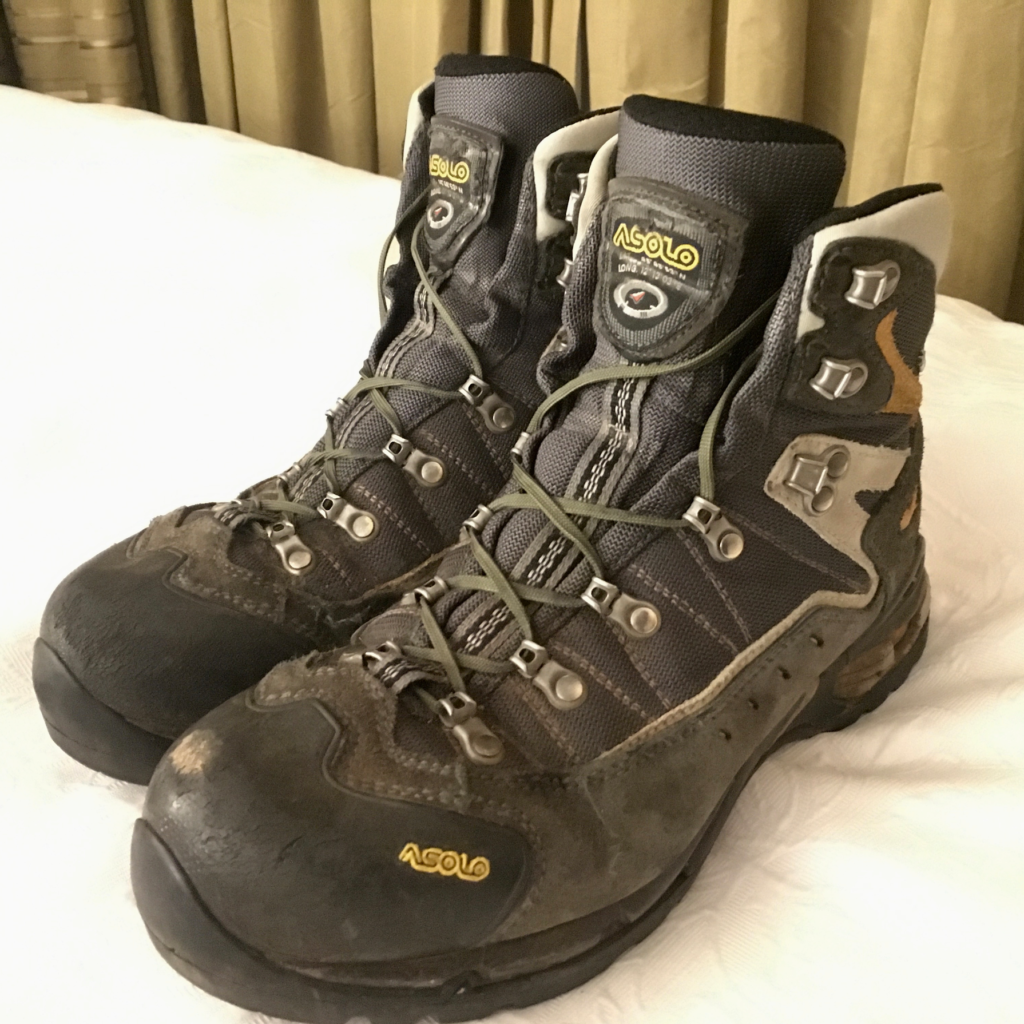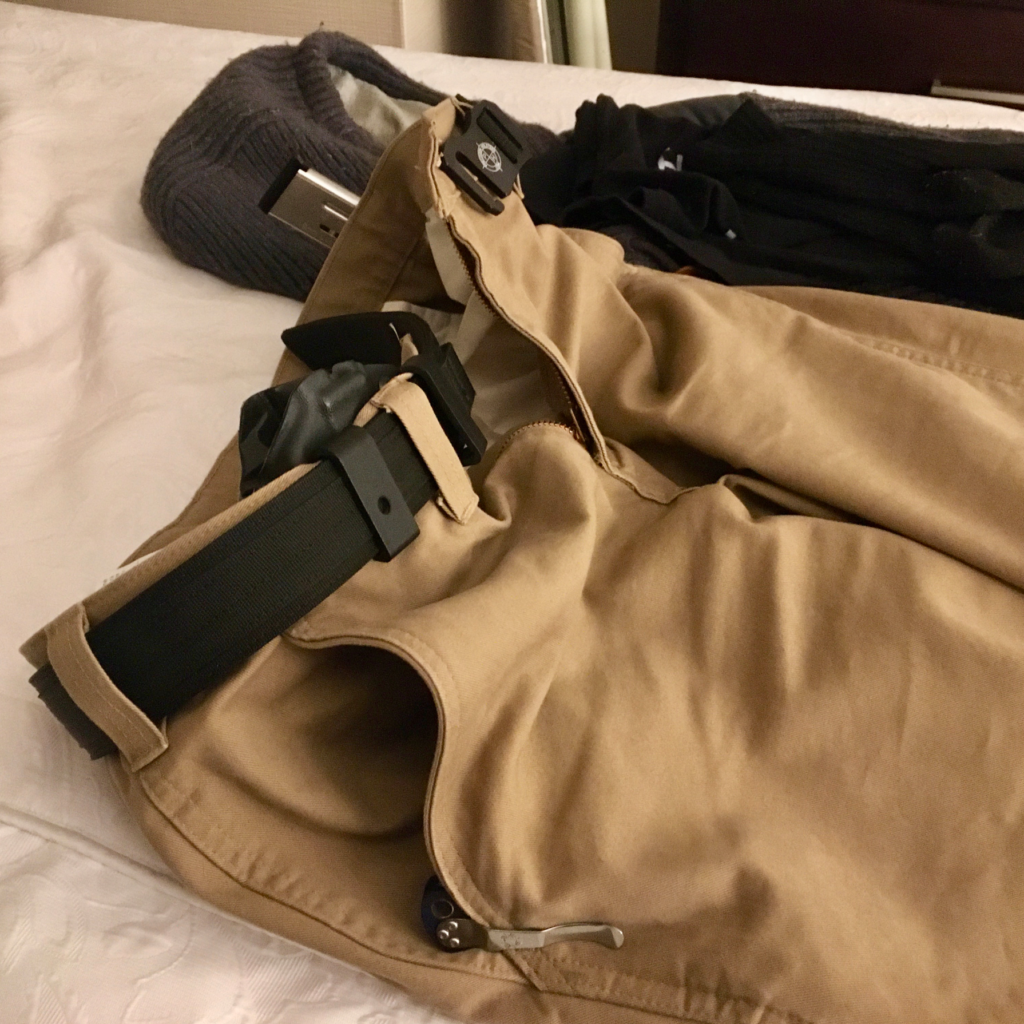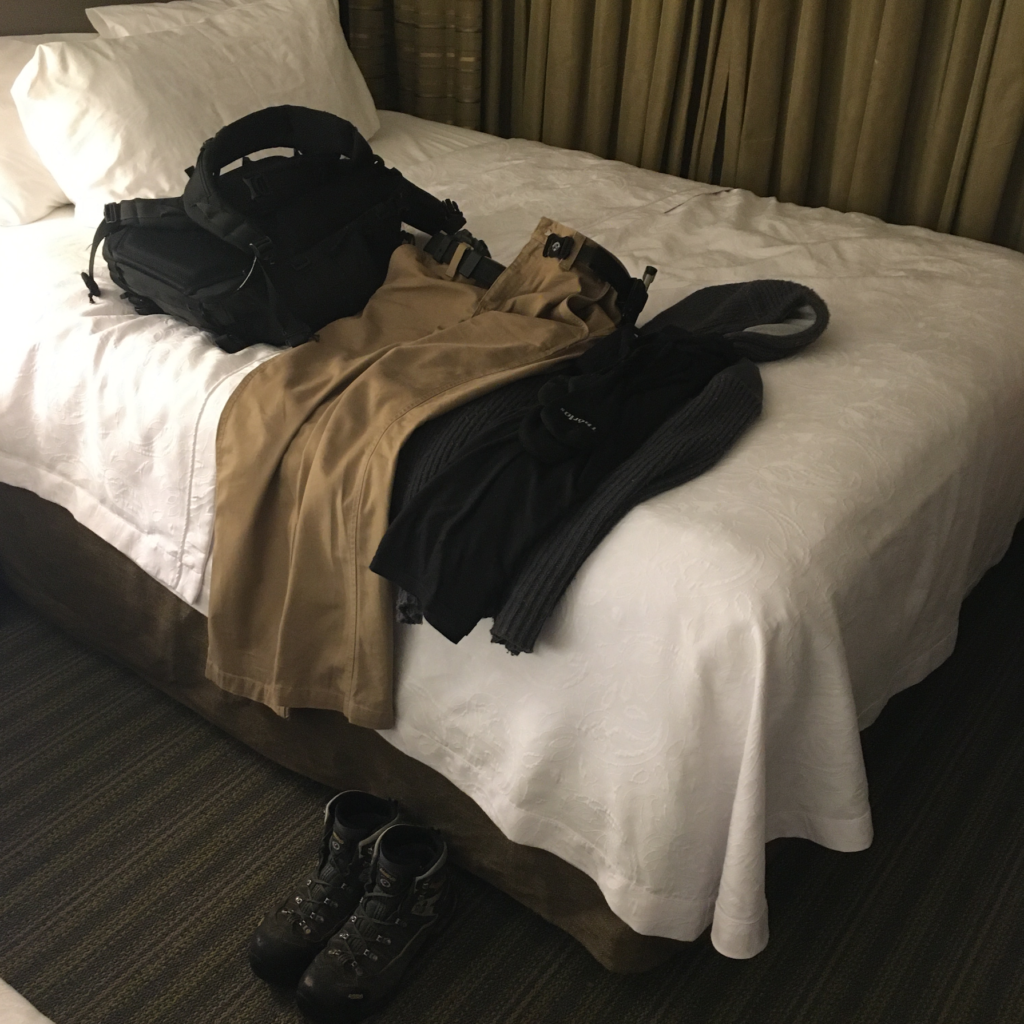This post is going to launch what (I hope) will become a recurring series on “micro-preparedness”. Micro-preparedness refers to very small processes that incur little to no time or financial penalty, but that may have a large impact on your overall level of preparedness. Today’s step is going to cover staging your clothing and belongings before you go to bed at night.
Background
This might seem silly but it is a habit that I developed in 2004 in Iraq. Occasionally in situations like that, one might expect to be unexpectedly roused. Being able to get dressed quickly was somewhat important, and developing some shortcuts to enable that seemed prudent. Since then I’ve kept it up, mostly just out of habit. I noticed myself picking a place to stage my clothes when we moved into the new place. I noticed that I had subconsciously done it in a hotel recently, as well.

This is an awesome example of “micro-prepping” because it can become one of those things you just do without conscious thought or effort. Let’s talk about it and why it’s important.
Importance
In the event of a disaster: fire, tornado, earthquake, intruder in your home, etc. it would be pretty beneficial to have some clothing handy and ready to be worn. Running around naked (or nearly naked) post-emergency is probably a good deal less comfortable than running around clothed. It is also safer.
Disasters often produce hazardous objects like shards of glass. Egress from certain emergencies (like a fire) may force to climb out of windows or find other unconventional exits. Doing so increases your risk of everything from scrapes and scratches to serious lacerations. A layer of clothing is truly your first line of defense against abrasions, cuts, and other hazards. It’s also your first layer of protection against the elements.
If you are forced to evacuate your home, you will also have to face the environmental conditions. If a fire occurs in the dead of winter, you don’t want to end up outside nearly naked. Even once the fire department has arrived they may not have a great deal of time or bandwidth to focus on your immediate comfort. Obviously getting out of your home quickly is more important than pulling on a pair of pants. But optimizing your clothing for quick retrieval and donning can help you potentially do both.
Note: if you are in immediate danger, getting out of the house/area quickly and safely should be your top priority.
Staging Your Clothing
Shoes: Your shoes might be the single most important piece of clothing in an emergency. If you are forced to walk around outside at night, or through broken glass, or in other dangerous conditions, you want to protect your feet. Any break in the skin creates the possibility of infection. Serious cuts or bruises on your feet can completely compromise your mobility.
My shoes stay in the bedroom at night, right below my clothing. Opening the bedroom door to retrieve shoes would be impossible if a fire were raging outside the door. Keep them close. Secondly, I always stage them with the laces tucked deep into the shoe. If I have to slip them on and go this will buy me a few minutes. Over time the laces will work their way out, but I don’t want to start out with trailing shoelaces. Making your laces a little longer than absolutely necessary can help keep them inside the boot.

Pants: My pants go on top of our laundry hamper, in the bedroom. My pants stay loaded with my EDC items: knife, flashlight, wallet, belt, and magazine/magazine pouch. If I’m at home and carrying OWB, my holster also stays on the belt. This lets me pull on my pants, slip on my shoes and be equipped to be a pretty competent individual.

Other Clothing Items: The rest of my clothing gets stacked on the hamper too. Usually shirt goes down first, then socks, then pants. Additional items are added depending on the season; in winter I typically wear a sweatshirt or wool sweater around the house. If so, that goes down first.

Putting it All Together
I have thought a lot about what would happen if I had to run out of my house on 5 or 30 or 60 seconds’ notice. With 5 seconds to spare I’d slip my bare feet into my shoes, scoop up my clothing and go. With 30 seconds, I’d slip my pants on, slip into my shoes, grab my phone and pistol and go. With 60 seconds I’d pull my shirt/sweater on, too, and grab my backpack and go. Believe it or not, I’ve rehearsed this a few times.
Again, this is a tiny step that probably isn’t going to make a huge difference for most people. It’s not going to take you from being unprepared to being prepped for TEOTWAWKI. But it imposes no financial cost and only a tiny amount time. Bottom line: you’ve gotta put your clothes somewhere when you lay down your head. Why not put them somewhere they’re easy to get to?






1 thought on “Micro-Preparedness: Staging Your Clothing”
Comments are closed.